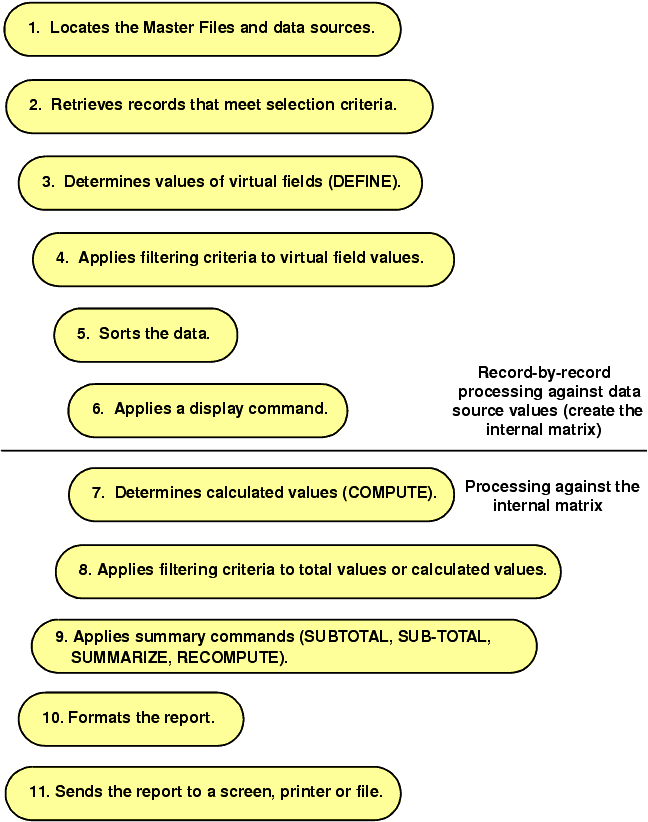What Is a Temporary Field?
A temporary field is a field whose value is not stored
in the data source, but can be calculated from the data that is
there, or assigned an absolute value. A temporary field takes up
no storage space in the data source, and is created only when needed.
When you create a temporary field, you
determine its value by writing an expression. You can combine fields,
constants, and operators in an expression to produce a single value. For
example, if your data contains salary and deduction amounts, you
can calculate the ratio of deductions to salaries using the following
expression:
deduction / salary
You can specify the expression yourself, or you can use one of
the many supplied functions that perform specific calculations or
manipulations. In addition, you can use expressions and functions
as building blocks for more complex expressions, as well as use
one temporary field to evaluate another.
x
Reference: Types of Temporary Fields
You
can use two types of temporary fields (a virtual field and
a calculated value), which differ in how they are evaluated:
A
virtual field (Define) is evaluated as each record
that meets the selection criteria is retrieved from the data source.
The result of the expression is treated as though it were a real
field stored in the data source. A virtual field is in effect until
it is cleared.
A calculated value (Compute) is
evaluated after all the data that meets the selection criteria is
retrieved, sorted, and summed. Therefore, the calculation is performed using
the aggregated values of the fields.
x
Reference: Evaluation of Temporary Fields
The following illustration shows how
a request processes, and when each type of temporary field is evaluated:

Example: Distinguishing Between Virtual Fields and Calculated Values
In the following example, both the DRATIO
field (virtual field) and the CRATIO (calculated value) use the
same expression DELIVER_AMT/OPENING_AMT, but do not return the same result.
The value for CRATIO is calculated after all records have been selected,
sorted, and aggregated. The virtual field DRATIO is calculated for
each retrieved record.
DEFINE FILE SALES
DRATIO = DELIVER_AMT/OPENING_AMT;
END
TABLE FILE SALES
SUM DELIVER_AMT AND OPENING_AMT AND DRATIO
COMPUTE CRATIO = DELIVER_AMT/OPENING_AMT;
END
The output is:

x
Reference: Selecting a Temporary Field
The following is to help you choose
the kind of temporary field you need.
Choose a virtual field when
you want to:
- Use the temporary
field to select data for your report. You cannot use a calculated
value, since it is evaluated after data selection takes place.
- Use the temporary
field to sort on data values. A calculated value is evaluated after
the data is sorted. With the BY TOTAL phrase, you can sort on this
type of field.
Choose a calculated value when
you want to:
- Evaluate the temporary
field using total values or prefix operators (which operate on total
values). You cannot use a virtual field, since it is evaluated before
any totaling takes place.
- Evaluate the temporary
field using fields from different paths in the data structure. You cannot
use a virtual field, since it is evaluated before the relationship
between data in the different paths is established.

